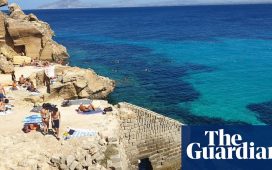Food
Life in Maastricht and our province of Limburg is sweet: our local specialities are proof. Two dishes stand out: limburgse vlaai is a delicious pastry with a sweet filling. There are lots of flavours, but the best is rijstevlaai, made with a rich rice-pudding centre. You won’t find that anywhere else in the Netherlands.
My favourite comes from Bakkerij Paulissen, but you can buy a slice with your coffee in just about any cafe in Maastricht. It’s best not to leave it until the afternoon, though – they’re very popular. The other thing to try is zoervleis – sour meat. It’s called that because the meat – at one time horse, but now beef – is marinaded in vinegar, but the sourness is offset by onions, fruit and sweet Dutch gingerbread. Try it at Café Sjiek – pronounced “chic”, in a nod to our reputation for dressing up and living the good life.
Inspiration
I love to walk around the old centre of the city. I still regularly find places I’ve never explored, even after many years of living here. If you’re a book lover, visit the Dominicanen between the Vrijthof and Market Square. It’s a 13th-century church converted into a bookshop and art space, and you can browse the shelves while taking in the frescoes and architecture.
Across the river in the newer part of the city, close to where the Maastricht Treaty was signed in 1992, is the Bonnefanten Museum. It has a mix of traditional Dutch art and modern exhibitions, but it’s also worth visiting just for the building. Its centrepiece is a rocket-shaped tower, which makes for a dramatic landmark. When you’re inside, take a good look up (maybe even lie on the floor, if it’s not too busy). The shapes and colours of the ceiling make it look as if it’s moving.
Neighbourhood
The Wyck district, just across the river from the centre, is where the railway station is, and a lot of people use it as a corridor to get to the bridge into town. But it’s actually a really nice area. For years it was run-down, full of empty and abandoned buildings, but now it is an up-and-coming neighbourhood, with independent shops and a growing number of good restaurants and hotels.
The De Ridder brewery has been there since 1857 but was shut down by Heineken in 2002. My colleagues and I started a microbrewery on the site in 2018. We’ve renamed it Stadsbrouwerij Maastricht, although the historic De Ridder sign still hangs on the building. We’re right on the water on the east bank of the river, where the evening sun lasts longest.
Green space
Unlike the rest of the Netherlands, Limburg is hilly, and just to the south of Maastricht is Sint Pietersberg Mount. It’s where Maastrichters go for some fresh air, or just to walk the dog. It’s a little bit of a climb, but it’s a relatively short walk from town and worth it for the views of the city, the river and countryside. The cave networks beneath the hill have been used to hide many things, including Rembrandt’s famous Night Watch and other works of art during the second world war. The hill was quarried for centuries but is now a nature reserve, with a lake of clear blue water.
Nightlife
For the full Maastricht evening experience, a good place to start is Koestraat. All of Maastricht comes here for dinner. It’s a tiny street, packed with restaurants, and even narrower in warm weather when there are tables outside. The owner of the Kaasbar, at no 14, loves cheese, so he opened the place to share both his passions. It’s where a lot of restaurant and bar staff get together after work. Later in the evening, there’s a lot of action around Platielstraat in places like Café van Bommel. Around 2am everything moves to the Market Square, where some bars have permits until dawn. Around Carnival time – sjoenkele– there’s live music in the bars and it gets very crowded, everyone swaying in time to a waltz.
Where to stay
The best places to stay are in Wyck – close to the station but convenient for the city centre. Hotel Beaumont (doubles from €125 room-only) is a family-run hotel that has been going for more than a century. Townhouse Maastricht (doubles from €120 B&B) is much more modern.
Tom de Lepper is founder of the Stadsbrouwerij Maastricht











